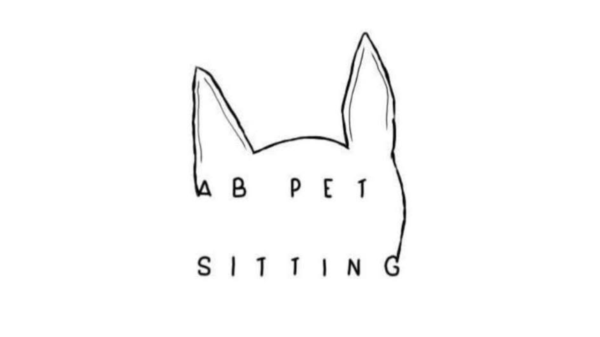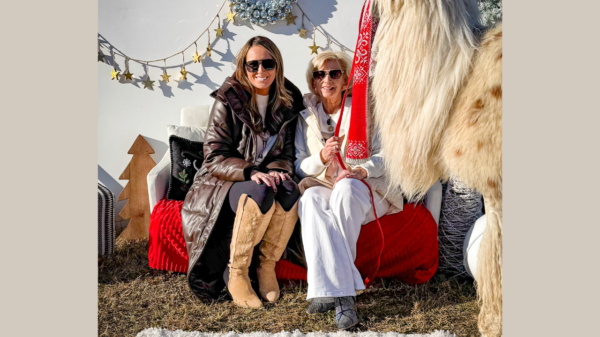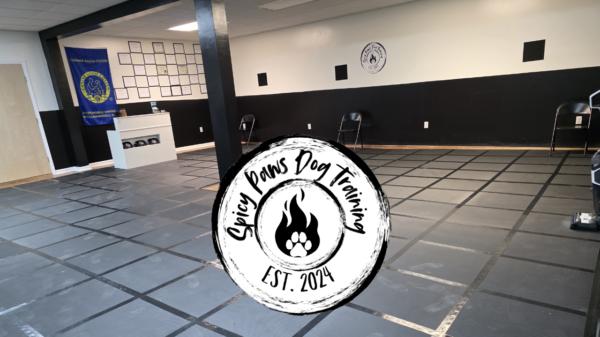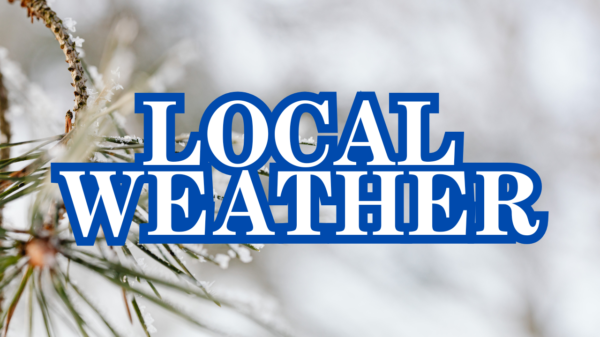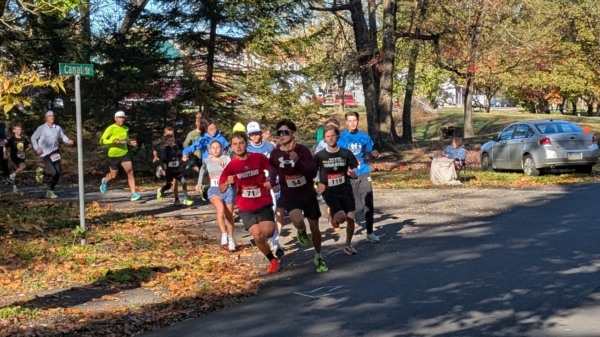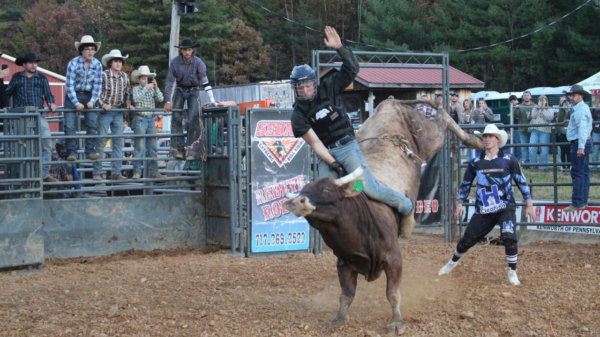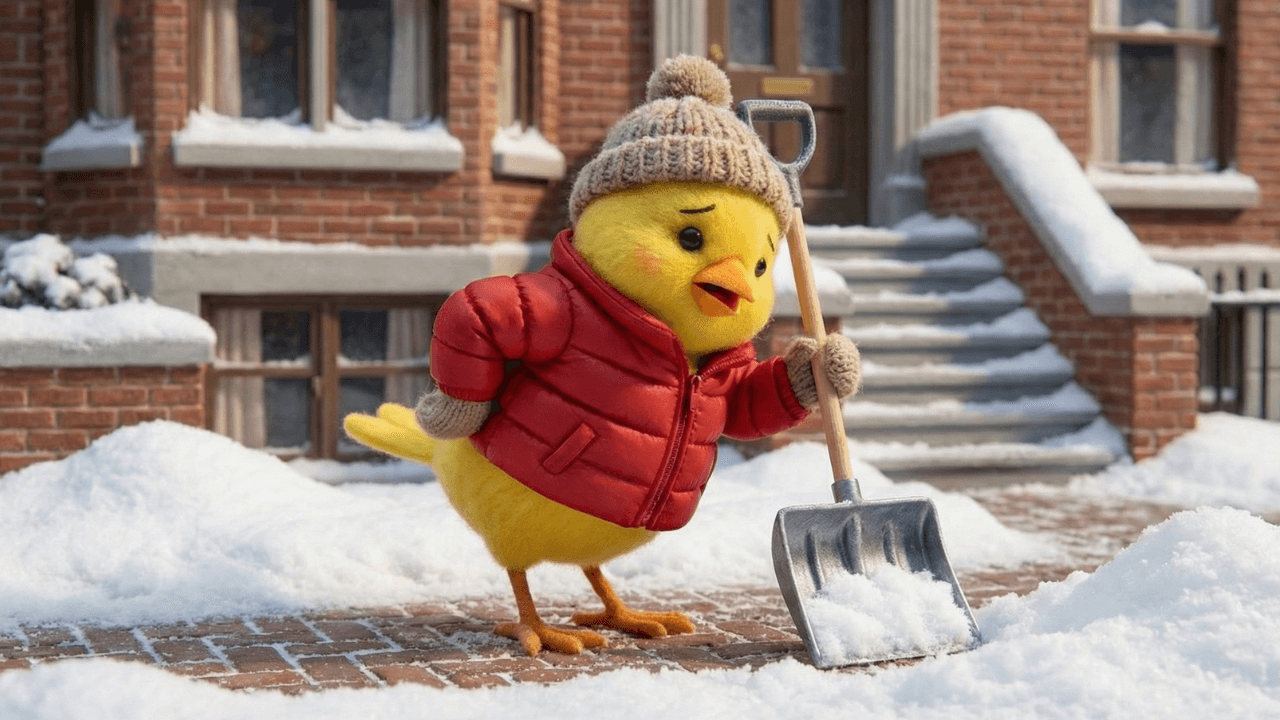When snow falls on us here in Schuylkill County, we’ll eventually be left with the inevitable task of shoveling snow. And it’s important – perhaps even life-saving – to understand the importance of snow shoveling safety.
This unavoidable chore carries with it a host of potential risks if not approached with care and awareness. Each year, a significant number of injuries and health issues are attributed to improper snow shoveling techniques. From muscle strains to more serious cardiovascular incidents, the impact of underestimating what shoveling snow can do to our bodies can have wide-ranging effects, from minor injuries to needing to call an ambulance.
Lauren Gibas, an occupational therapist with Lehigh Valley Rehabilitation Center-Schuylkill, says, “Shoveling snow can often be a challenge even for the most active of people. It is important to approach snow shoveling like you might any strenuous activity.”
Let’s look at the importance of snow shoveling safety. Our goal is not only to keep you safe as you clear your driveways and sidewalks and shovel out your vehicles but also to make this grizzly chore as efficient and injury-free as possible.
The Most Common Injuries and Complications Associated with Snow Shoveling
These are the most common injuries and health complications that come from shoveling snow and not following simple safety measures prior to and during your work.
- Cardiovascular Risks: The physical exertion required in shoveling snow elevates heart rate and blood pressure. This can be particularly hazardous for those with pre-existing heart conditions, increasing the risk of heart attacks, especially in the cold which narrows blood vessels.
- Musculoskeletal Injuries: The repetitive lifting and twisting motions involved in snow shoveling can lead to strains and injuries, primarily in the back and shoulders. These injuries can be exacerbated by improper lifting techniques and the sheer weight of the snow.
- Slip-and-Fall Accidents: The icy conditions that often accompany snow can increase the likelihood of falls, leading to bruises, fractures, or more severe injuries such as concussions.
- Hypothermia and Frostbite: Prolonged exposure to freezing temperatures while shoveling can result in hypothermia, where the body loses heat rapidly, and frostbite, the freezing of skin and tissues.
- Respiratory Problems: Cold air can trigger respiratory issues, such as asthma, making it challenging to breathe during the strenuous activity of shoveling snow.
Being aware of these risks is crucial for anyone preparing to shovel snow. It helps in taking the necessary precautions and knowing when to seek help or modify the approach to this winter task.ow shoveling a safer activity during the winter months.
12 Snow Shoveling Safety Tips
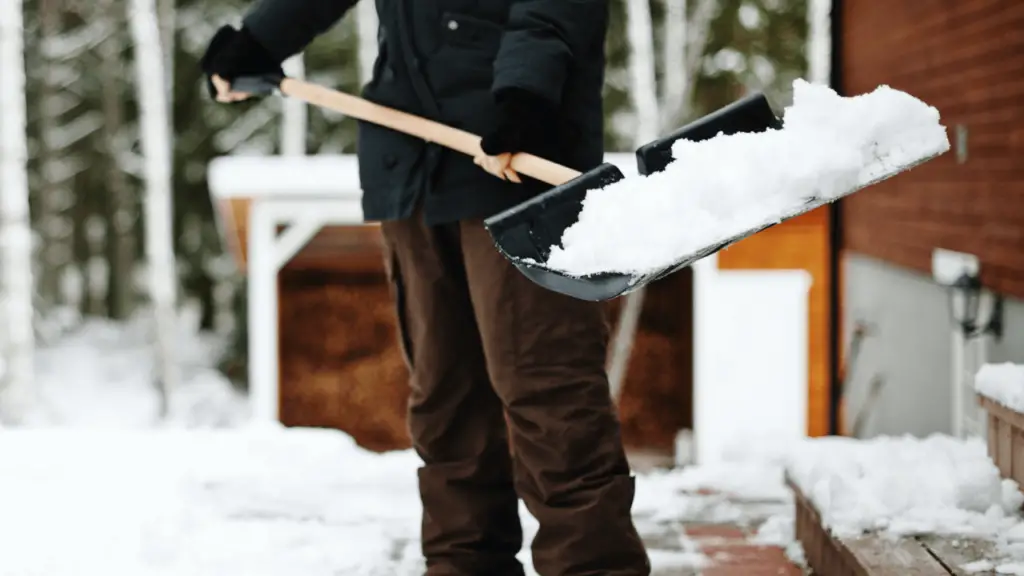
To ensure safety and efficiency while shoveling snow, it is crucial to follow these action-oriented safety tips. They are designed to minimize the risk of injury and make the task more manageable.
Gibas says the some of the most important steps you can take happen before you even go outside.
“Prepare yourself ahead of time with the proper clothing and warm-up activity. Know your limits and pace yourself. Listen to your body. Halt activity if you are in pain or short of breath,” she says.
- Choose the Right Shovel: Select an ergonomic shovel with a curved handle and an appropriate length. This reduces bending and lifting, with the shovel being light enough to handle comfortably and efficiently.
- Dress Appropriately: Layer up for insulation. Wear a water-resistant layer on the outside. Cover extremities with gloves and warm socks, and opt for shoes with good traction to prevent slipping. Gibas advises keeping your head and neck covered to limit the loss of body heat.
- Do Some Warm-Up Exercises: Engage in light stretching or walking in place for a few minutes before starting. Warming up prepares the body for physical activity and reduces the risk of muscle strains.
- Use Proper Lifting Techniques: Bend at the hips and knees, lifting with the legs rather than the back. Keep the shovel blade close to your body to reduce strain and avoid twisting your torso when discarding snow. Gibas says to keep your feet shoulder-width apart and don’t twist and turn your feet in the direction snow is being thrown.
- Mind Your Shoveling Pace: Maintain a steady pace and take regular breaks to avoid overexertion. Listen to your body’s limits to prevent injuries.
- Stay Hydrated: Regularly drink water, even in cold weather, to avoid dehydration which can impact your strength and endurance.
- Clear Small Amounts: Shovel smaller amounts of snow more frequently rather than waiting for it to accumulate. This approach is less strenuous than dealing with large, heavy snow piles.
- Start Shoveling as Soon as Snow Stops: If there’s a lot of snow, clear off a few inches from the top and work your way to the ground.
- Use Salt or Sand for Traction: Apply salt or sand to icy areas for melting snow and providing traction. This is crucial for preventing slips and falls, especially on walkways and driveways.
- Get a Snowblower: If you can get one, a snowblower will help reduce the strain and risk of injuries associated with shoveling snow. Some battery-powered snowblowers work great and are more affordable than a bigger machine.
- Clear Safe Walking Paths: Focus on shoveling clear, safe paths to essential areas like front doors and driveways. This prevents accidents on slippery surfaces.
- Listen to Your Body: Be attentive to any signs of distress or fatigue. Stop shoveling and rest if you experience pain, shortness of breath, or excessive tiredness, as ignoring these signs can lead to severe health issues.
Recognizing and Responding to Emergencies While Shoveling Snow
It’s critical to be aware of and know how to respond to emergencies when you’re shoveling snow. Prompt action can significantly reduce the risk of severe complications.
Identifying Signs of Distress
It’s important to be alert to symptoms indicating overexertion, hypothermia, or heart strain. These include:
- Overexertion: Common signs are excessive sweating, breathlessness, extreme muscle weakness, and dehydration. Feeling dizzy or experiencing blurred vision are also indicators that your body is being pushed too hard.
- Hypothermia: This condition may present with uncontrollable shivering, slurred speech, clumsy movements, confusion, and extreme fatigue. It’s crucial to recognize these symptoms early, as hypothermia can rapidly become life-threatening.
- Heart Strain: Be aware of chest pain or discomfort, shortness of breath, an irregular or fast heartbeat, and in severe cases, fainting or severe dizziness. These symptoms require immediate attention as they could indicate a heart attack or other serious cardiovascular issues.
Emergency Response and First Aid
If any of these signs are observed, follow these simple steps to avoid serious injuries and complications:
- Cease Shoveling Immediately: Continuing to shovel can worsen the condition. Prioritize your health over finishing the task.
- Seek Shelter and Warmth: If hypothermia is suspected, move to a warm environment as quickly as possible. Remove any wet clothing and replace it with dry, warm layers.
- Call for Emergency Assistance: If symptoms are severe, especially in cases of suspected heart strain or hypothermia, call emergency services immediately.
- Administer Basic First Aid: For overexertion, find a place to sit down, rest, and rehydrate. In cases of hypothermia, gently warm the person; avoid rapid rewarming or hot baths, as this can cause shock.
- CPR Preparedness: If someone is experiencing heart strain and becomes unconscious, CPR can be crucial in keeping them stable until emergency services arrive, provided you are trained in its administration.
- Professional Medical Evaluation: Always advise a follow-up with a healthcare professional. Even if the symptoms lessen, there could be underlying health issues that need to be addressed.
Understanding these emergency protocols is essential. It’s always better to be cautious and seek professional medical advice when encountering any signs of distress during snow shoveling. Your quick response can make a significant difference in ensuring safety and well-being.
Shoveling Snow Tips for Seniors and People with Pre-existing Health Conditions

Snow shoveling needs to be approached differently by some, particularly for those more vulnerable like the elderly or people with pre-existing health conditions.
Tips for Seniors
Older adults face a higher risk of injury and health complications from snow shoveling due to factors like reduced physical strength, balance issues, and a higher likelihood of having chronic health conditions. Here are some tailored tips for seniors:
- Use a Lightweight Shovel: Opt for a smaller, lightweight shovel to reduce strain.
- Avoid Heavy Lifting: Try to push the snow rather than lifting it, and if lifting is necessary, do it in smaller amounts.
- Take Frequent Breaks: Work in short intervals with breaks to prevent overexertion.
- Stay on Level Ground: Avoid shoveling on slopes or uneven surfaces to reduce the risk of falls.
- Seek Help When Needed: Consider hiring help for snow removal or ask family members and neighbors for assistance.
Adjustments for Pre-existing Conditions
Individuals with health conditions such as heart problems, respiratory issues, or musculoskeletal disorders should take extra precautions:
- Consult with a Doctor: Before taking on the task of shoveling snow, consult with a healthcare provider to understand any specific risks and get personalized advice.
- Choose the Right Time: Avoid shoveling early in the morning, as this is when most heart-related incidents occur. Also, wait until the weather is warmer.
- Monitor Symptoms: Be vigilant about any signs of distress related to your condition, such as chest pain, shortness of breath, or joint pain, and stop immediately if these occur.
- Use Ergonomic Equipment: Utilize tools and gear that reduce physical stress, like ergonomic shovels or snow blowers.
- Adapt the Technique: Adjust shoveling techniques to minimize stress on vulnerable areas of the body. For instance, those with respiratory issues should avoid overexertion and take frequent breaks.
Subscribe to Coal Region Canary
Get email updates from Coal Region Canary by becoming a subscriber today. Just enter your email address below to get started!Support Coal Region Canary
Like our reporting and want to support truly local news in Schuylkill County? Your small donations help. For as little as $5, your contribution will allow us to cover more news that directly affects you. Consider donating today by hitting the big yellow button below ...








